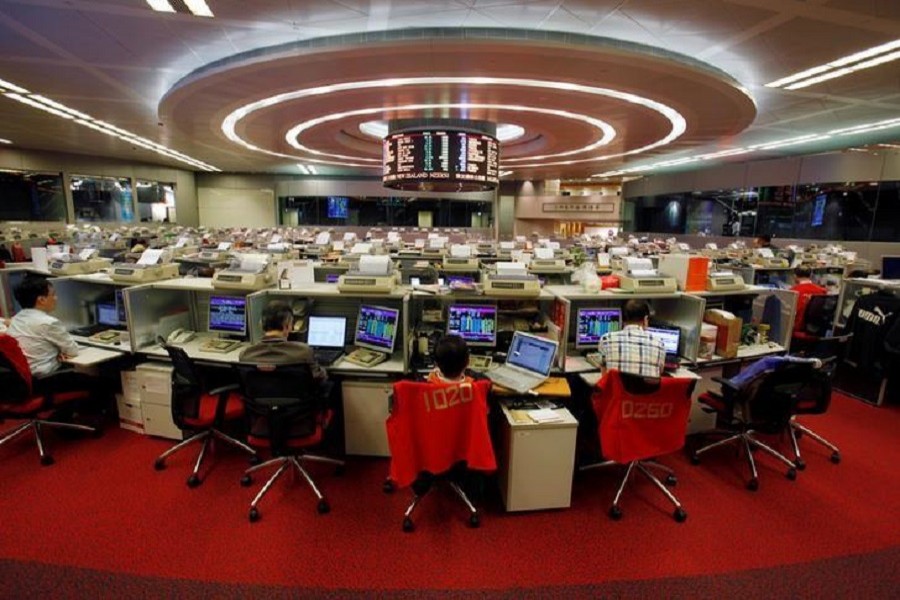Asian shares fell the most in over a year on Monday as fears of resurgent inflation battered bonds, toppled Wall Street from record highs and sparked speculation that central banks globally might be forced to tighten policy more aggressively.
MSCI’s broadest index of Asia-Pacific shares outside Japan shed 1.9 per cent in the largest daily drop since late 2016.
E-Mini futures for the S&P 500 fell another 0.44 per cent, an unusually sharp move for Asian hours and suggesting further losses in US markets later in the session.
Japan’s Nikkei sank 2.3 per cent, while Australia’s main index lost 1.3 per cent and Chinese blue chips slid 0.7 per cent.
Investors were spooked by Friday’s US payrolls report which showed wages growing at their fastest pace in more than 8-1/2 years and fuelling inflation expectations.
Futures markets reacted by pricing in the risk of three, or even more, interest rate rises from the Federal Reserve this year.
“The earnings data fits too closely with the narrative of emerging wage pressures to be dismissed,” said Deutsche Bank macro strategist Alan Ruskin.
“The data will add fuel to the debate on whether the Fed is falling behind the curve. It will raise the chances of the Fed median dots shifting up to 4 rate hikes for 2018,” he added.
That would be negative for emerging markets and commodity currencies, said Ruskin. Both the Australian and New Zealand dollars fell sharply in the wake of the job numbers, along with a range of Asian currencies.
It was also a major blow to government bonds. Yields on 10-year US Treasury paper were up at a four-year peak of 2.86 per cent, having jumped almost 7 basis points on Friday.
The 2-year yield was near a nine-year top at 2.162 per cent, tightening financial conditions and offering a more competitive return compared to equities. The dividend return of the Dow, for instance, was 2.13 per cent.
Priced for perfection
Wall Street had already been flashing expensive by many historical measures and sold off in reaction. The Dow fell 2.54 per cent, the S&P 500 2.12 per cent and the Nasdaq 1.96 per cent.
It was the Dow’s biggest daily percentage loss in 20 months and the largest point fall since December 2008. The three major indexes capped their worst weekly losses in two years, after closing at record highs the previous week.
“It has to be remembered that US shares were priced for perfection at around 19 times earnings,” said Craig James, chief economist at fund manager CommSec, noting the historic average is around 15 times.
“Still, US companies have produced stellar earnings over the reporting period. So it is understandable that some ‘irrational exuberance’ would emerge.”
With half of the S&P 500 companies having reported, 78 percent have beaten expectations against an average 64 per cent.
The lift in US yields provided some initial support to the dollar after a rocky start to the year, though it was starting to lose altitude again in Asian trade.
Against a basket of currencies, the dollar was down a fraction at 89.154 having climbed 0.6 per cent on Friday for its biggest single day gain in three months.
The dollar backed off to 109.90 yen from an early 110.29, while the euro nudged up to $1.2453 from $1.2425, reports Reuters.
Any rally in the US dollar is considered a negative for commodities priced in the currency, with the Thomson Reuters CRB index down 0.5 per cent. Gold was off a touch at $1,330.50 an ounce after losing 1.0 per cent on Friday.
In oil markets, US crude fell 53 cents to $64.92 a barrel, while Brent lost 57 cents to $68.01.


